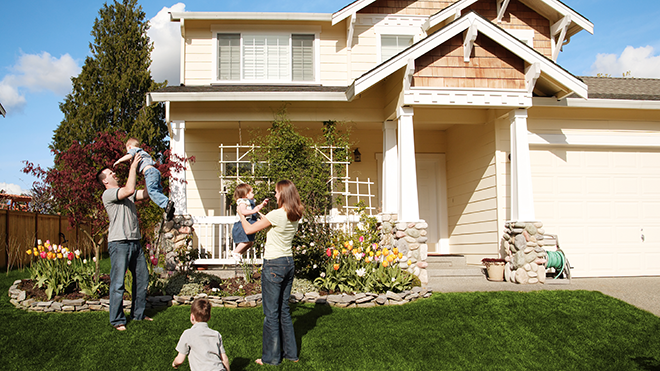What’s included in a homeowner policy?

Your home insurance policy covers more than just the structure.
Homeowner insurance is much more than just coverage for your home and other structures. As a consumer, you need to know what your policy covers and protect yourself with enough coverage.
COVERAGE FOR YOUR HOME AND OTHER STRUCTURES
If you have a mortgage on your home, the lender typically will advise an acceptable limit for your dwelling. However, many insurance carriers will also want to complete either an interior or exterior inspection to make sure the home is insured to value. This is the amount it would take the carrier to rebuild your home if you were to experience a total loss.
PERSONAL PROPERTY COVERAGE
Personal property means your possessions, such as furniture, clothes and dishes, if they are damaged by a covered peril (for example, a fire.) Most policies automatically provide personal property coverage from 50% to 75% of your dwelling coverage amount. If your home is insured at $500,000, you may have between $250,000 and $375,000 personal property coverage. But here are a few items to consider:
Take an inventory: Make a detailed list of all your personal possessions or take photos of each room of your home. This will help you estimate how much coverage you need, and you’ll have records in case you need to file a claim. Be sure to keep this information is a safe place or a separate location.
Understand how your policy pays out for your personal property: Some policies insure your personal property at its actual cash value, which means depreciation is subtracted from the total reimbursement amount. Other policies provide guaranteed replacement cost for personal property, which is generally more expensive, but can be worth it if you experience a covered loss.
Add extra coverage for high-value items: Some homeowner policies have limits for different categories of items, such as jewelry, silverware, wine and firearms. It is important to know your policy limits to make sure you have enough coverage for that category. If you have more than the limit, it will be important to schedule these items – insure them separately – to provide adequate coverage.
PERSONAL LIABILITY
Another important aspect of a homeowner policy is personal liability coverage. This coverage protects you if someone is injured and you are held liable, for example, if someone slips and falls on your property. How much money do you think you would need to pay a settlement and court costs? Standard homeowner policies generally provide $300,000 or $500,000 in personal liability coverage. If you need more coverage, you should also purchase an umbrella policy to extend over both your personal liability and auto liability limits. To determine the amount of coverage you’d need to adequately cover you and your family, be prepared to share a list of your assets when you speak with your agent.
ADDITIONAL LIVING EXPENSES
Additional living expenses, also called loss of use coverage, pays for you to live elsewhere if your home becomes hazardous to live in after a covered loss. It can cover hotel stays, meals and laundry services. Standard home insurance sets additional living expenses at 20% of your dwelling coverage, but some homeowner policies will let you purchase a higher limit. If you live in a location prone to natural disasters, it may be especially important to purchase additional coverage.
ADDITIONAL COVERAGES TO CONSIDER
Flood insurance: While most homeowner policies cover some water damage – for example, from a burst pipe – home insurance does not cover flood damage. Mortgage lenders require homeowners to purchase flood insurance for dwellings located in flood zones that indicate a higher exposure to flood losses. Even if you are not in one of these areas, you might live in an area that’s inclined to flooding and should consider buying a flood policy.
Earthquake insurance: Earthquake is also a cause of loss that most standard policies do not cover. However, it may be purchased as an endorsement or stand-alone policy.
Water backup: Know what water losses your homeowner policy covers, as not all will cover water that backs up through your drains or overflows from a sump pump. Often this is an additional endorsement you can purchase. You may be able to select the limit you desire.
Service line: Service line coverage guards you against potentially expensive repairs to your utility lines for water, waste disposal, electrical power, heating, communications or compressed air. Some insurers can offer coverage for these lines as an endorsement.
MORE INFORMATION
If you have questions, it’s always best to talk these items over with your local, independent insurance agent so they can help make sure you are adequately covered.
Coverages described here are in the most general terms and are subject to actual policy conditions and exclusions. For actual coverage wording, conditions and exclusions, refer to the policy or contact your independent agent.







